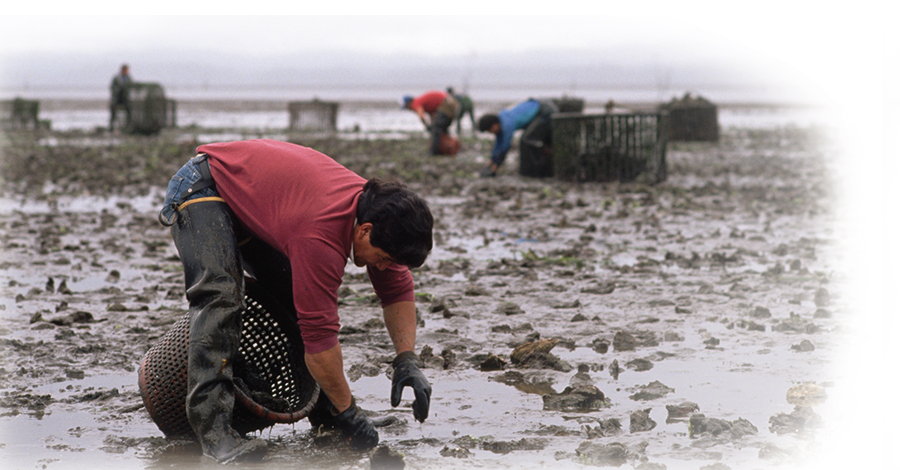Acres of Collaboration at the 26th Annual Shellfish Growers Conference
Bringing together growers and researchers to sustain and further aquaculture in Washington
By Andrew Chin, WSG Science Communications Fellow
Tended acres of clams, oysters and geoduck sustain a multimillion-dollar industry in coastal Washington. Given the impending and dramatic changes to Washington’s waters on the horizon, shellfish growers and managers are eager to stay ahead of the curve and listen to the science. By the same token, scientists seek feedback from growers on what research is most useful to them.
This spirit of collaboration was thriving at the 26th annual Conference for Shellfish Growers, held at the Alderbrook Resort in Union, Washington on March 11-12, 2019. Organized by Teri King, an aquaculture specialist at Washington Sea Grant (WSG), the conference brought together shellfish producers, managers and researchers to discuss pressing issues and current research related to shellfish biology and aquaculture.
Examples of joint-effort research between scientists and growers at the conference was evident from a variety of sources. “The growers understand the scientific process. Many of them do their own experiments,” King said. Parker MacCready, a physical oceanographer at the University of Washington, presented the LiveOcean model, which is essentially an underwater weather forecast for Puget Sound that integrates atmospheric, oceanographic and river flow data to give predictions of water quality and currents up to three days in advance. The maps that MacCready has developed model hypoxia and oil spills in Puget Sound and ocean acidification in Willapa Bay. MacCready was eager to expand his offerings in ways that clearly focus on the growers’ needs. “I’d love to hear from everyone about what would be most relevant to you,” he said at the conference. “If you want different timescales, parameters or area—I can make any map with this model, you just need to tell me what to do.”
“One great suggestion [received from a grower in the conference audience] was to make maps showing areas that are ‘good or bad’ to set out oyster seed, based on things known to affect oyster growth like temperature, aragonite saturation state, and salinity,” he later said. Other suggestions from the conference audience included the expansion of harmful algal bloom and bottom oxygen modeling to detect hypoxia for Dungeness crab fisheries along the coast.
In addition, there was great interest in collaborating on burrowing shrimp control research. Increasing abundances of shrimp, which disrupt the sediment and choke shellfish plantings, have been observed in Washington—and as chemical control is banned, growers and managers are interested in finding alternative methods. Presentations from the Washington Department of Natural Resources and student researchers from the UW Toxicology Lab highlighted mechanical harrowing and applying salt as possible solutions.
Presentations from growers on sources of mortality led to open-ended questions: “I’m curious to know if anyone else has observations [of mortality],” said biologist Nick Wenzel from Seattle Shellfish. Different suggestions were floated around, including buildup of rotting Ulva sea lettuce that may cause toxic fumes. Sharing these personal observations help growers improve operations and scientists develop and rigorously answer questions.
Learning didn’t only occur between growers and scientists: the conference was a great opportunity for growers to exchange observations with one another, as well. Many participants swapped notes about their farming practices throughout the conference. “We come away every time with something to try and do,” said Dawn Smart, co-owner of HC Snail in Union.
In the end, everyone at the conference cared about one thing: shellfish. And the recognition that managers, scientists and growers are all working towards a common goal was a welcome break from the sometimes adversarial narrative found between resource users and managers.
“The conference is invaluable for bringing researchers, shellfish growers and managers together to understand various sides of an issue and move forward with valuable research that answers pressing questions,” King said.
